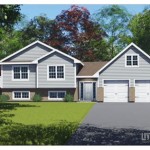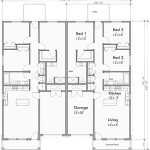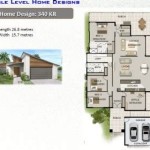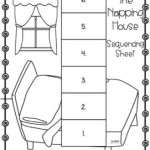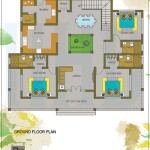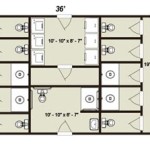Dogtrot House Plans: A Look at This Unique Architectural Style
The Dogtrot house, a distinctive architectural style prevalent in the American South, embodies a fascinating blend of practicality and simplicity. Characterized by its long, narrow layout with an open-air breezeway or "dogtrot" running down the center, this architectural style evolved from the need for both comfort and functionality in a hot and humid climate. The Dogtrot house, rooted in the early days of American settlement, offers a glimpse into the ingenuity and resourcefulness of early settlers who adapted to their environment to create a comfortable and sustainable living space.
Origins and History of the Dogtrot House
The Dogtrot house's origins can be traced back to the early 18th century, when European settlers began arriving in the southeastern United States. The warm, humid climate of the region posed significant challenges for early settlers. To combat the oppressive heat and humidity, they developed ingenious building techniques. The Dogtrot house design emerged as a practical solution to these challenges. The breezeway served as a natural air conditioning system, allowing cool air to circulate through the house, providing relief from the summer heat. This design also offered a level of privacy, separating the living spaces from the kitchen and other work areas.
The name "Dogtrot" is thought to have derived from the way dogs would often run through the breezeway, taking advantage of its coolness and open space. The earliest Dogtrot homes were typically constructed from readily available materials such as logs and clapboard, often with a simple, one-story design. Over time, the design evolved, incorporating more elaborate details and larger footprints, but the central breezeway remained a defining feature of the Dogtrot’s character.
Distinctive Features of Dogtrot House Plans
Dogtrot house plans are easily recognizable by their specific features. Here are key elements that define this unique architectural style:
1. The Breezeway
The breezeway, or dogtrot, is the hallmark of the Dogtrot house. This open-air passage is typically located in the center of the house, connecting the two main living areas. The breezeway provides natural ventilation and a space for movement, creating a flow of air that helps to keep the house cool. The open-air design also allows for light to penetrate throughout the house, minimizing the need for artificial lighting during the day.
2. The Enclosed Rooms
The Dogtrot house typically consists of two enclosed rooms flanking the breezeway. These rooms were designed to be functional spaces, offering privacy and shelter from the elements. The rooms were often used as bedrooms, living rooms, or kitchens, accommodating the needs of the family. The separation of the enclosed rooms from the breezeway allowed for a degree of privacy and isolation, while still maintaining a connection to the outdoor environment.
3. The Overall Layout
The Dogtrot house is characterized by its long, narrow layout. This design maximizes the use of space and allows for efficient use of resources. The narrow footprint also helps to reduce the impact of the sun’s heat, as the long walls are less exposed to direct sunlight. This layout made it possible to construct a comfortable home even with limited resources and materials. The overall design, with its focus on simplicity and functionality, reflected the lives and values of the early settlers in the American South.
The Enduring Appeal of Dogtrot House Plans
Despite their humble origins, Dogtrot house plans continue to hold an allure for those seeking a connection to the past or a unique and charming style of home. The simplicity of the design, the natural ventilation provided by the breezeway, and the cozy atmosphere created by the enclosed rooms make these houses both practical and aesthetically pleasing.
Modern interpretations of the Dogtrot house plans incorporate contemporary features and materials while preserving the essence of the original design. Many architects and homeowners are drawn to the Dogtrot’s unique blend of functionality and charm, finding it a refreshing alternative to the more standardized designs often seen in modern housing. The Dogtrot house, with its roots in the rural South, continues to inspire and captivate people with its timeless beauty and practicality. The design speaks to the ingenuity and resourcefulness of early settlers who, through their ingenuity and connection to their environment, created a home that has stood the test of time.

Dog Trot House Plan Dogtrot Home By Max Fulbright Designs

Experience The Charm Of Our Camp Creek Dog Trot House Plan

Diana S Dog Trot Dogtrot Cabin Floor Plan

3 Bedroom Dogtrot House Plan 92318mx Architectural Designs Plans

Dog Trot House Plan Dogtrot Home By Max Fulbright Designs

Dogtrot House Plan Large Breathtaking Dog Trot Style Floor Plans

Mid Century Modern Dogtrot House Plan With 4 Beds And 3 Baths 623172dj Architectural Designs Plans

Great Compositions The Dogtrot House
Dogtrot House Wikipedia

Level 1 Dog Trot House Plans Floor

